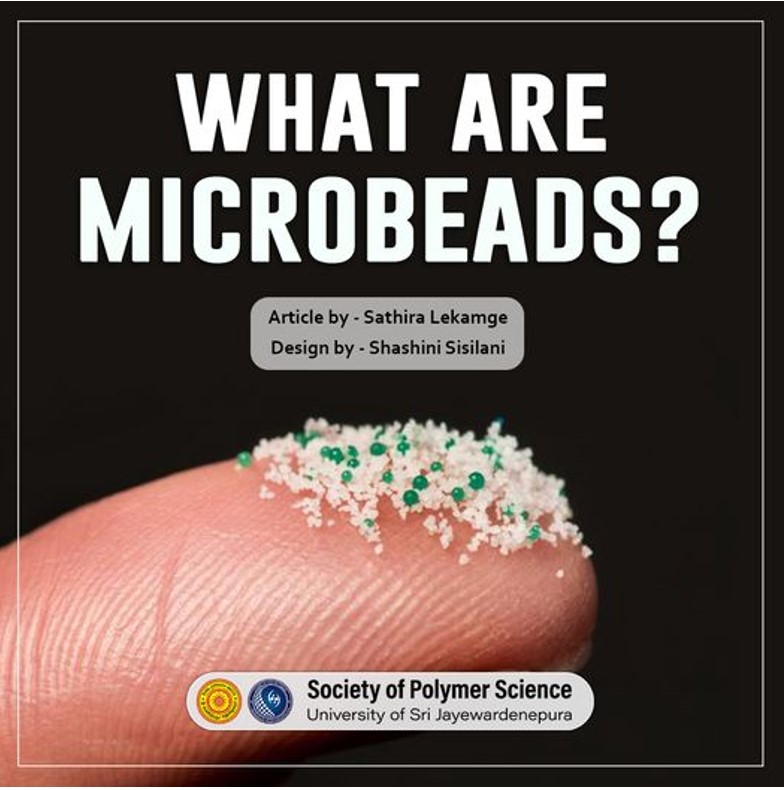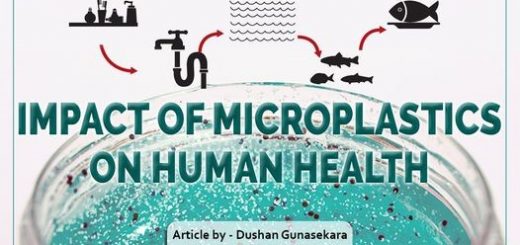What are Microbeads?

Plastics are one of the greatest inventions achieved by humankind. Plastics are extremely versatile as a material; it is ideal for a wide range of consumer and industrial applications. Even though it is used in worldwide, plastics have a major downside. Because of its terribly slow biodegradability, waste plastics play a key role in environmental pollution. Plastic debris can be divided into two parts as macro plastics and microplastics.
Microplastics are small plastic particles less than 0.2 inches (5 millimeters) long, according to the National Oceanic and Atmospheric Administration (NOAA). These non-biodegradable microplastics can accumulate and persist in wide variety of environments including oceans. Microplastics can be divided into two types: primary and secondary. Primary plastics are microbeads, plastic pellets (nurdles) and plastic fibers. Secondary microplastics form from the breakdown of larger plastics; this typically happens when larger plastics undergo weathering, through exposure to wave action, wind abrasion, and ultraviolet radiation from sunlight etc. In this article, we are focusing on the one of the world’s most used microplastics, “Microbeads.”
Microbeads are tiny solid plastic particles. Generally, they are made of polyethylene(PE) but also can be made of other petrochemical plastics such as polypropylene(PP), polystyrene(PS), poly(ethylene terephthalate)(PET), poly(lactic acid)(PLA) and poly(methyl methacrylate)(PMMA) etc. These microbeads are deliberately added to cleaning products, cosmetics, and personal care products such as facial scrubs, cleansers, and toothpastes. Companies add microbeads to their products to give texture, to function as an abrasive or bulking agent, as exfoliants and to prolong shelf-life of the product or simply to provide visual interest on their products. Why companies use microbeads as exfoliants in their products? They are much cheaper than the natural exfoliants. And microbeads are smooth enough to use every day than natural exfoliants so your product will runout quicker so they can sell more products. Single tube of your facial scrub can contain about more than 330000 plastic microbeads.
Many of these microbeads containing products are designed to be rinsed off, meaning when you use those products like a face scrub, its microbeads go down the drain. Because they are too small to be filtered, billions of microbeads end up in lakes, rivers and oceans every day. And in water, these tiny bits of plastics act as sponges; soaking up the toxics such as heavy metals, pesticides and persistent organic pollutants(POPs) around them. So, a single microbead can end up being a million times more toxic than the water around it. Once in our waterways they get eaten by fish and other animals and cause them digest problems and reproductive problems. And those pollutants soaked by microbeads walk their way up the food chains. When microbeads move up the food chain, the toxicity of it can get much stronger through Bio Magnification which poses a serious threat to animals in top of the food chain including humans, causing very harmful health effects such as birth defects, developmental disabilities and even cancers. As today, microbeads pose a great direct threat to the environment and animal species. And once released, it’s almost impossible to remove them from the affected eco system because of its size. Let’s discuss more about how microbeads affect our environment and how to reduce the usage of microbeads in upcoming articles.
References –
https://www.nationalgeographic.org/encyclope…/microplastics/
https://oceanservice.noaa.gov/facts/microplastics.html
https://www.plasticsoupfoundation.org/…/microplastics/beat…/



